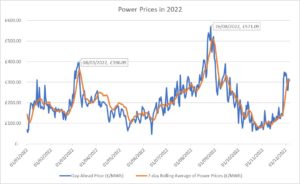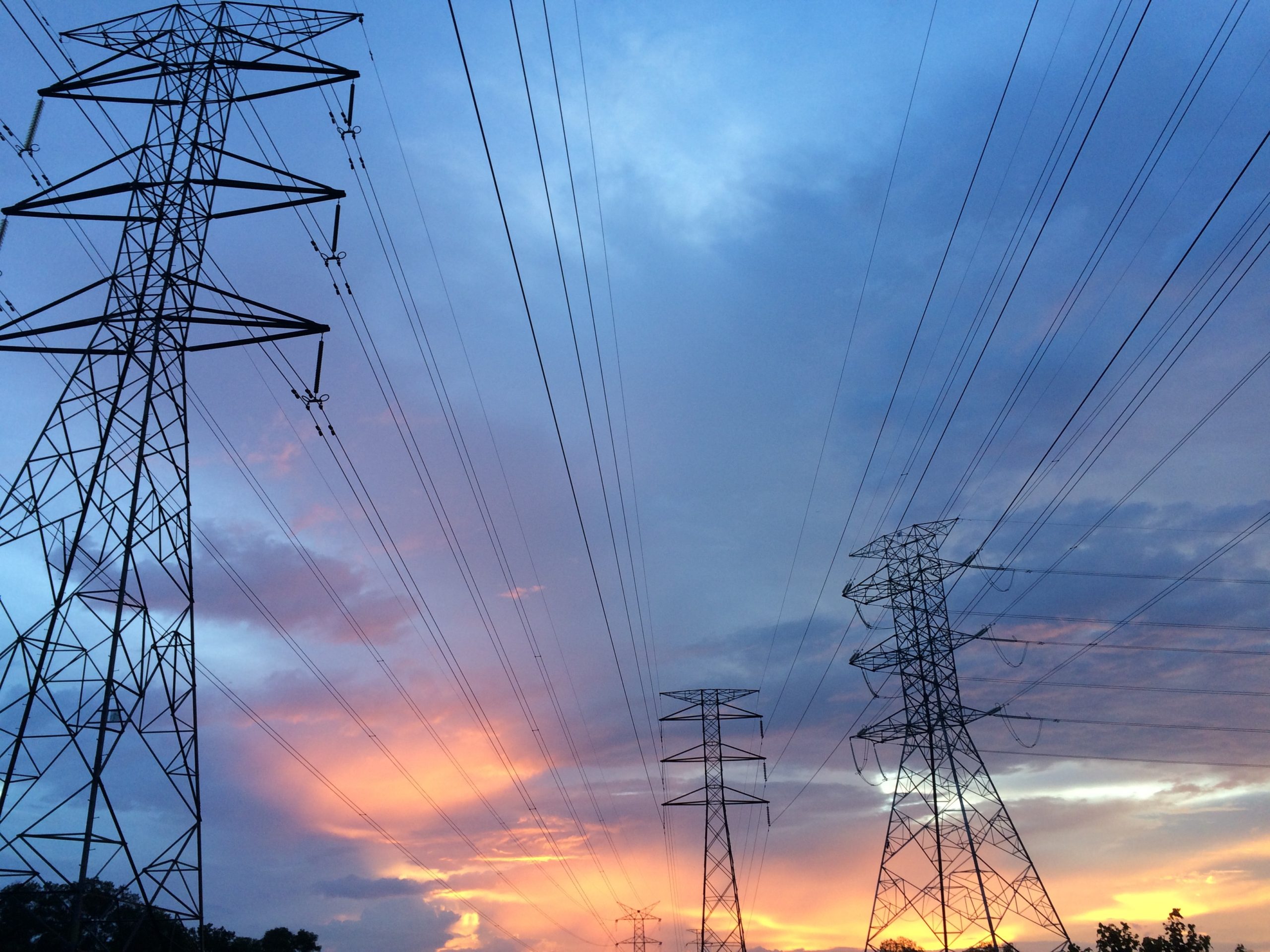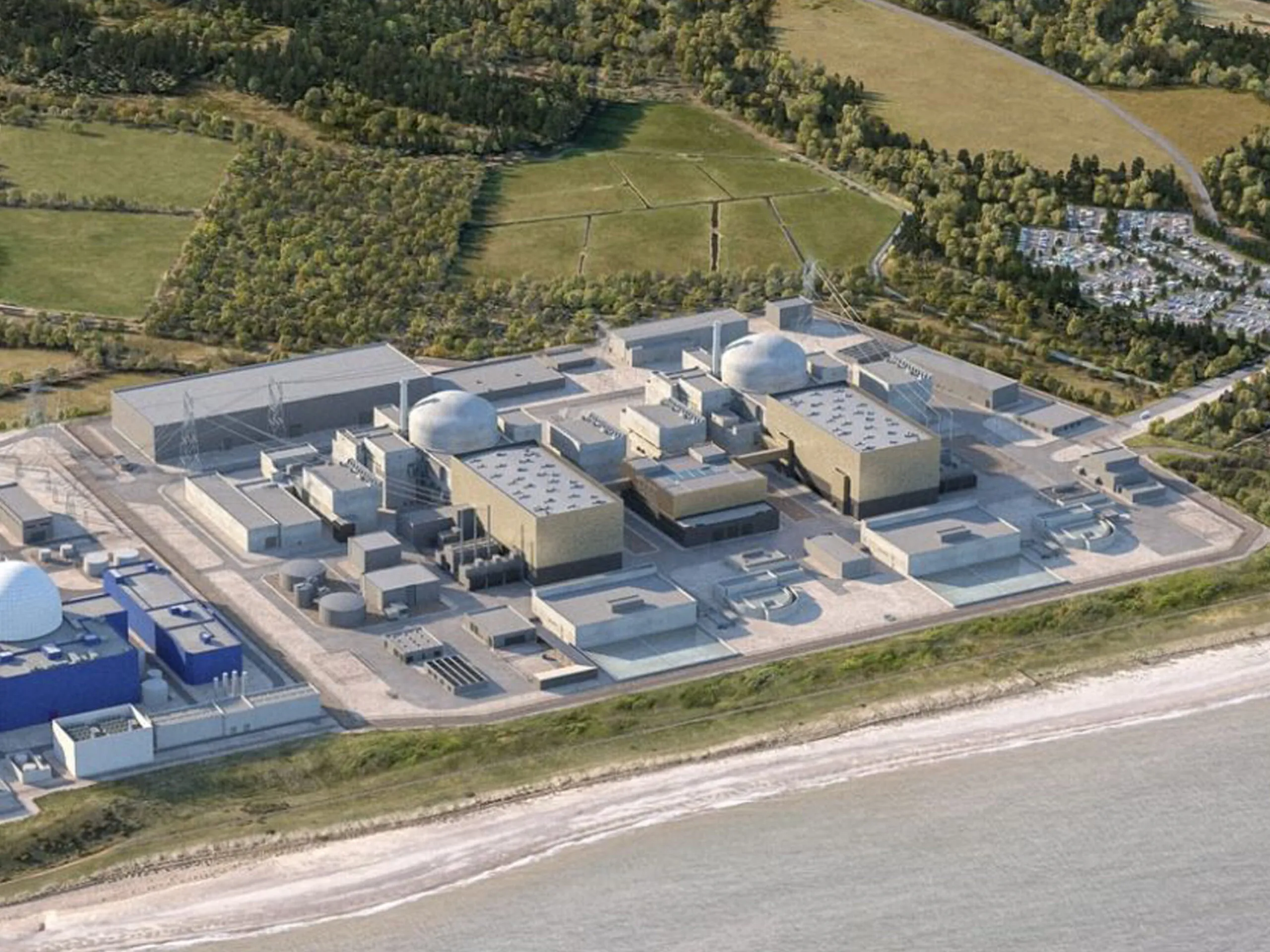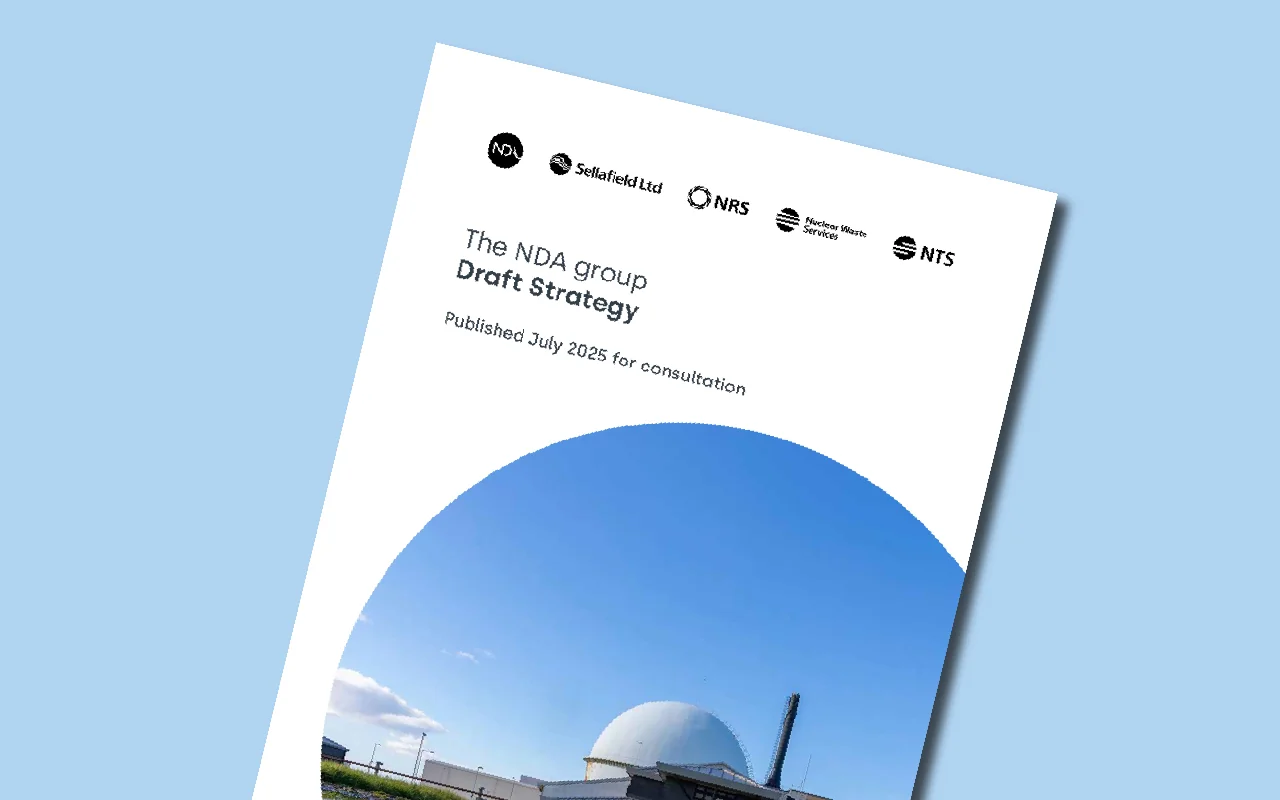2022 has been a year like no other for electricity prices, with the war in Ukraine and poor long-term planning to blame, writes the NIA's Jake Moorman
At the end of each year, it is always interesting to look back over the events of the past twelve months and reflect on all that has happened. In 2022, the twists and turns have made for compelling analysis. At the NIA we have been keeping a careful eye on the price of power in the UK and for a long time we have been predicting a significant rise in energy costs. This year, our predictions were realised, but on a scale that no-one had fully anticipated.
Entering the new year there was a real sense of optimism around the country. We were finally emerging from the shadow of Covid-19 and looking forward to the post-pandemic era. Despite the general positivity, the energy markets were looking a little shaky on the back of a cold winter in the northern hemisphere. The day-ahead power price for New Year’s Day was a modest £69/MWh, a surprisingly good start, but it wasn’t to last. Within two weeks the price had risen to £311/MWh, setting a precedent for what would prove to be a roller-coaster year.

January also saw us bid farewell to Scotland’s most valuable clean energy asset, Hunterston B. The power station provided the UK with clean energy for 46 years, producing 297.4 TWh of electricity. It was the second of the AGR fleet to retire after Dungeness B went into defueling in 2021, leaving the UK with just six generating nuclear power stations.
The loss of Hunterston B certainly didn’t help the situation. A reduction in our nuclear capacity means we are even more reliant on expensive gas to plug the gap, with just balancing the grid becoming extremely costly; around £10,000,000 a day for the first two months of the year. Then, to make matters worse, at the end of February, Russia invaded Ukraine in an appalling move that sent shockwaves all around the world. The impact on the energy market was seismic.
Countries rightfully made the decision to boycott Russian energy, but at a significant cost. March saw unprecedented power prices with an all-time high of £396/MWh on the 8th and a record monthly average of £250/MWh.
As we headed for summer, prices stabilised slightly – by 2022 standards anyway – with the average cost in May and June down by 43% compared with March. Sadly though, it was not to last, with July seeing prices ramping up yet again.
Continued pressure from the effects of Putin’s war, coupled with record summer temperatures – therefore an increase in air-conditioning use – in the northern hemisphere, and countries looking to replenish their gas stocks ahead of the winter, reversed the decline seen earlier in the Summer. It drove prices back up to almost where they were in March. By this point it was clear that the UK was far too vulnerable to the international energy markets, we needed home-grown energy sources like never before.
The retirement of Hinkley Point B nuclear power station on the 1st of August was an untimely loss of firm, sovereign power. The station is the UK’s most productive clean-energy asset ever, generating 311 TWh of electricity over its 46-year lifetime. The Somerset station’s successor, Hinkley Point C, is due to come online in June 2027 and for British energy security, that date cannot come quick enough.
Removing Hinkley Point B’s two reactors from the national grid further put the UK at the mercy of international gas prices. Power prices in August completely smashed March’s record, rising by 43%, with a monthly average of £370/MWh and a maximum daily cost of £571/MWh on the 26th. In context, the average price in August 2022 was 246% higher than the previous year, a very alarming statistic.
Thankfully, September provided some respite, but prices remained higher than they had been in March. At the end of September, the National Grid published its Winter Outlook report, with warnings of power cuts in the UK and a potential lack of supply from continental Europe with planned outages on the French nuclear fleet. The forecast was bleak.
However, an uncharacteristically mild and windy autumn provided the UK with the lifeline it needed after the turbulent first nine months. Power prices fell dramatically, with October being the first month of the year where costs were lower than they were at the same time in 2021. More good news came in the form of EDF’s stated ambition to extend the operating lifetimes of Heysham I and Hartlepool power stations beyond March 2024. With only five operating power stations left in the UK’s fleet, an extension could be crucial to mitigating against any future volatility.
As we approach the end of the year with the average day ahead price of electricity is hovering around £200/MWh*, the optimist in me hopes that 2023 will provide a more stable energy market. Realistically, only time will tell. However, the most important lesson from this year is that our reliance on gas has left us at the mercy of volatile energy prices and the resulting increase in the cost of electricity has been alarming.
In a world of increasingly unpredictable weather, we cannot continue to rely on the climate to bail us out. Most autumns will not be as mild as this one and the wind may not blow as favourably as it has recently. Therefore, more than ever, we need a secure and reliable source of affordable energy which only British nuclear power alongside renewables can provide.
*Updated from original article to reflect a jump in the market price of electricity
This article was published in the winter edition of the NIA’s Industry Link magazine. Click here to read the rest of the edition.
Back to the hub












